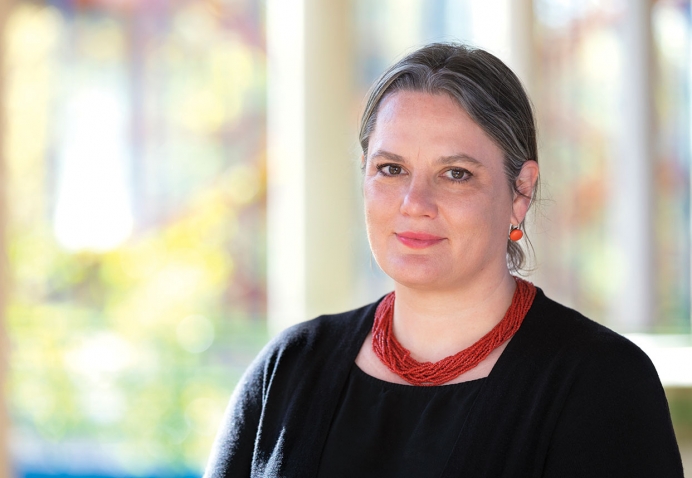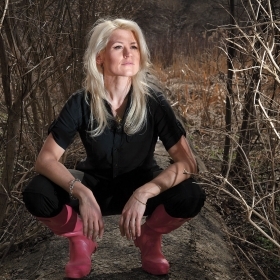Photo by Lisa Abitbol
“I want students to understand that we’re not just bags of human cells—we’re in this really tight partnership with microbes that are doing all kinds of services for us,” says Vanja Klepac-Ceraj, associate professor of biological sciences. To this end, she teaches an environmental microbiology course that explores the fundamentals of the field, while giving students the chance to manipulate microbes in the lab.
When Klepac-Ceraj set out to design the course, she knew that she wanted to focus on microbes in the human body. These microorganisms—and the microbiomes they make up—play a vital role in everything from processing food and drugs to fighting off intruders, and can also cause various diseases. “The way we think about human health cannot be independent from microbes,” she says. “Microbes had millions of years to evolve and adapt without us, and when we came, we were never without them.”
During the course, students explore basic concepts such as what microbes are present in humans, how these microbes interact, how microbial communities change over time, and what factors drive these changes. They also consider how microbes vary throughout the body and across individuals and populations—all while learning about the techniques that scientists use to study microbes. “Microbiology is at this really exciting time where we have finally figured out how to look at microbes,” Klepac-Ceraj says. “It’s almost like having a little glass lens, like Alice in Wonderland.”
For the lab component, Klepac-Ceraj realized she needed a model system that would allow students to safely work with microbes. After some consideration, she came up with a somewhat surprising dairy-centric solution: cheese. “You can ask the same questions about the microbes associated with the human body that you can ask about the microbes associated with cheese,” Klepac-Ceraj says. In past years, students have used next-generation DNA sequencing to examine microbial genomes, comparing microbes from American and European cheese, as well as those from cheeses with natural and bloomy rinds.
This year, faced with the shortened term system and a partially virtual class, Klepac-Ceraj chose to focus labs on culturing, a classical microbiology technique in which microbes are grown on different kinds of lab plates. She mailed complete lab kits to off-campus students (and re-mailed kits after an ill-timed winter storm), and the class conducted experiments exploring, for example, how different salt concentrations and antibiotics affect microbial growth and interaction. “There is nothing more satisfying to me than picking up a chunk of cheese and a petri plate and going through the process of growing microbes and seeing how they look, how they smell, how fast they grow,” Klepac-Ceraj says.
Her fascination with microbes doesn’t stop there. As part of the Environmental Influences on Child Health Outcomes program at the National Institutes of Health, Klepac-Ceraj and her team will track the microbiomes of up to 1,000 children for 1,000 days after birth to investigate microbial factors that influence health. Klepac-Ceraj, who is trained as a microbial ecologist, is also planning research close to home, in Lake Waban and Paintshop Pond. At these sites, she will collect samples weekly or monthly to understand how the microbial communities are changing over time. “Microbes are everywhere,” Klepac-Ceraj says—and she sees it as her mission to open students’ eyes to the “microbial wonderland” that surrounds us.








We ask that those who engage in Wellesley magazine's online community act with honesty, integrity, and respect. (Remember the honor code, alums?) We reserve the right to remove comments by impersonators or comments that are not civil and relevant to the subject at hand. By posting here, you are permitting Wellesley magazine to edit and republish your comment in all media. Please remember that all posts are public.